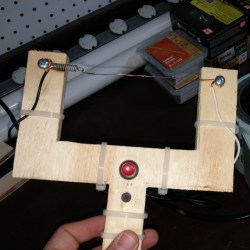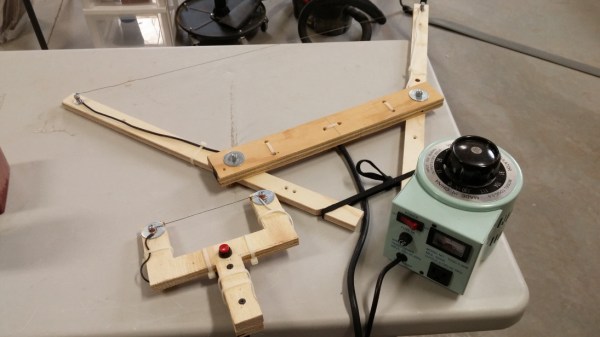One of [Bithead]’s passions is making Star Wars droids, and in the process of building the outer shell for one of them he decided to use hot wire foam cutting and make his own tools. Having the necessary parts on hand and having seen some YouTube videos demonstrating the technique, [Bithead] dove right in. Things didn’t go exactly to plan but happily he decided to share what did and didn’t work, and in the end the results were serviceable.
 [Bithead] built two hot wire cutters with nichrome wire. The first was small, but the second was larger and incorporated some design refinements. He also got an important safety reminder when he first powered on with his power supply turned up too high; the wire instantly turned red and snapped with an audible bang. He belatedly realized he was foolishly wearing neither gloves nor eye protection.
[Bithead] built two hot wire cutters with nichrome wire. The first was small, but the second was larger and incorporated some design refinements. He also got an important safety reminder when he first powered on with his power supply turned up too high; the wire instantly turned red and snapped with an audible bang. He belatedly realized he was foolishly wearing neither gloves nor eye protection.
When it came to use his self-made tools, one of the biggest discoveries was that not all foam is equal in the eyes of a hot wire cutter. This is one of those things that’s common knowledge to experienced people, but isn’t necessarily obvious to a newcomer. A hot wire cutter that made clean and effortless cuts in styrofoam did no such thing with the foam he was using to cast his droid’s outer shell. Still, he powered through it and got serviceable results. [Bithead]’s blog post may not have anything new to people who have worked with foam and hot wire cutters before, but if you’re new to such things you can use it to learn from his experiences. And speaking of improving experiences, [Bithead] most recently snazzed up the presentation of his R2-D2 build by getting tricky with how he hides his remote control.











